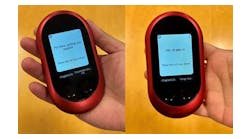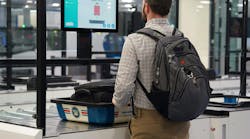We’re told that the No-Fly list has slightly more than doubled in the past year, from about 10,000 to around 21,000 names, apparently not because more terrorists suddenly sprang from the bushes, but because we’ve figured out a better way to identify them. Stated another way, up until now, about half the known bad guys were incognito, but the intelligence community has now seriously stepped up its game. That’s a good thing, although it remains unknown, or at least unreported, how many of them may have actually been apprehended. Presumably, if they can’t fly, they’re on Amtrak or Greyhound, and we must always remember that TSA is a multi-modal agency, already performing random searches in some mass transit venues. Further, it’s no longer just for no-fly; it includes much broader international security threats that both CBP and ICE watch for at the border.
For most of you solid citizens, the good news is that only about 500 of you on the list are American, although the ACLU has already sued on behalf of some of you who have been unable to travel and cannot find out why. The rest are from foreign countries, although that doesn’t necessarily mean they are not among us, dressed like my goofy neighbor Phil. The 100% increase may point to better international cooperation among law enforcement and political organizations, so the problematic persons don’t get on a flight to JFK in the first place. But it also results from lowering the standard for who gets on the list and why, the criteria for which the government will not disclose.
The 2009 crotch bomber was listed in a much larger data base which has a very large component of partial names, differently spelled translations, and relatives of suspected terrorists, but there wasn’t enough there to flag him for the much more specific no-fly list. After that realization, government agencies worldwide broadened the baseline and reviewed old files, discovering people who they thought should have been on the list in the first place … but again, based on somewhat thinner connectivity in the evidence, which can be viewed as either good or bad.
Another report of bad news: TSA has announced it is no longer seeking a shoe-scanner technology. Recent efforts apparently ”did not result in any viable systems that meet TSA's technical or operational needs", which were not further elaborated. Some experts suggested it was too expensive, too unreliable, too many false alarms, or too much radiation. Nobody would be quoted on whether the threat has continued undiminished, or whether this might affect the promises for skipping the shoe scan in TSA’s proposal for risk-based security at the checkpoint.
And finally, at a recent computer technology show in Las Vegas, it was stated that a portable computing device such as a laptop or smart phone is stolen at a US airport on average every 50 seconds. Very rough number crunching suggests that works out to an average of about 3 per day for every airport. I’m not sure I believe it, because the speaker did not cite a source such as police reports, whether from checkpoints or checked baggage, perhaps extrapolation from just a few busy airports, or maybe just his own forgetful circle of geeky friends, but if the real number is even half of that, it’s a good reminder to keep an eye on your junk.


